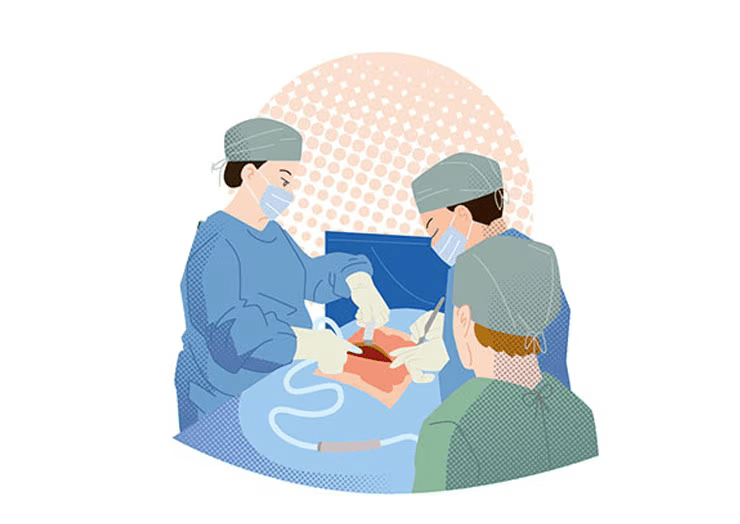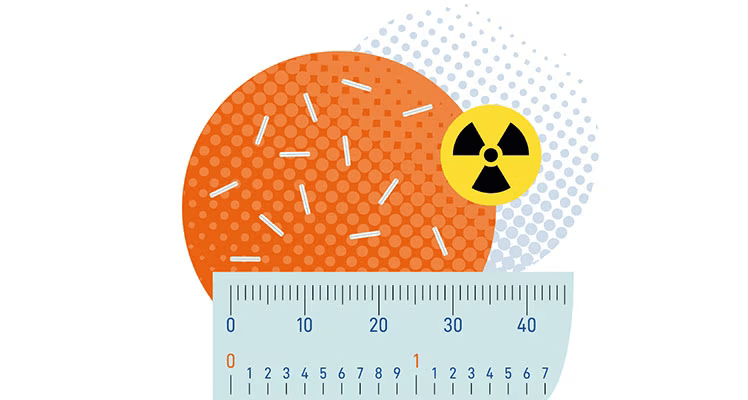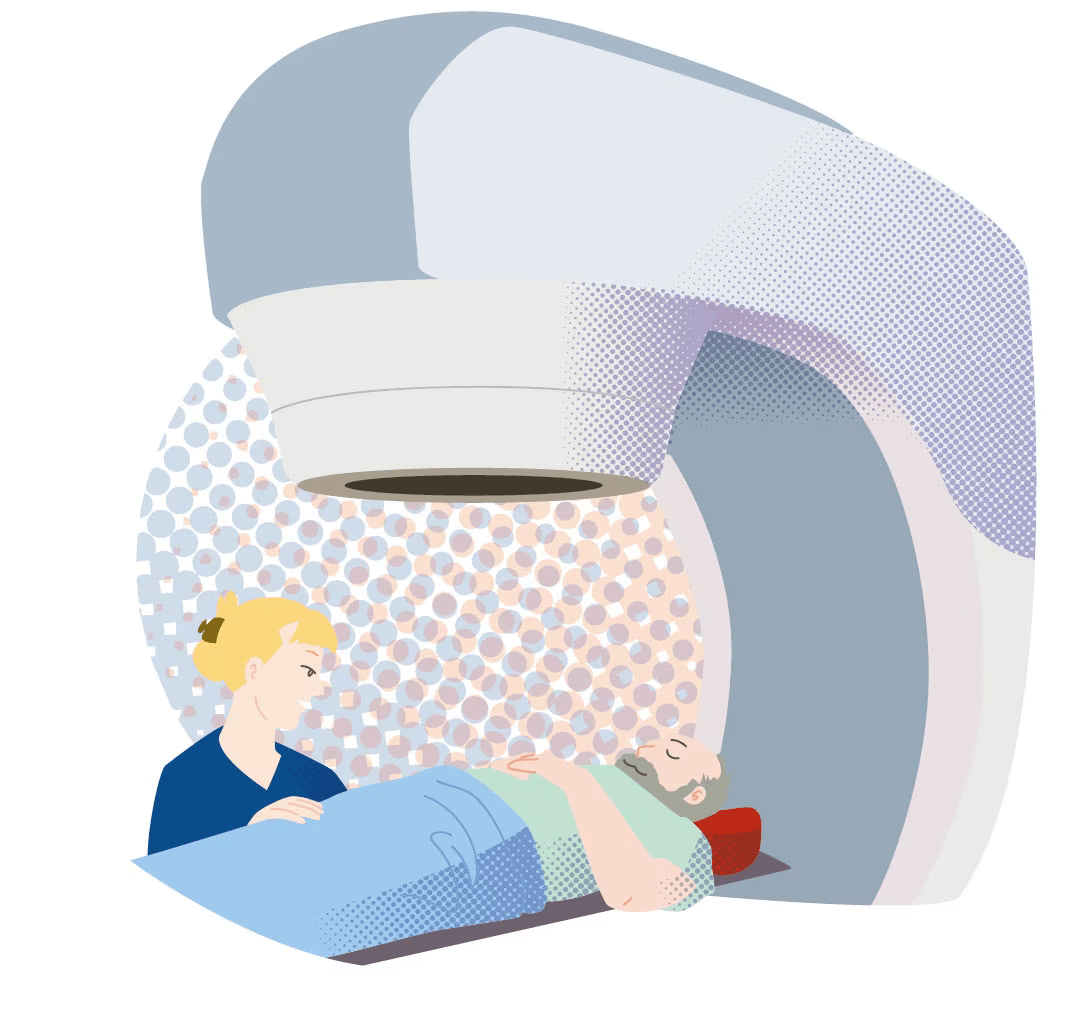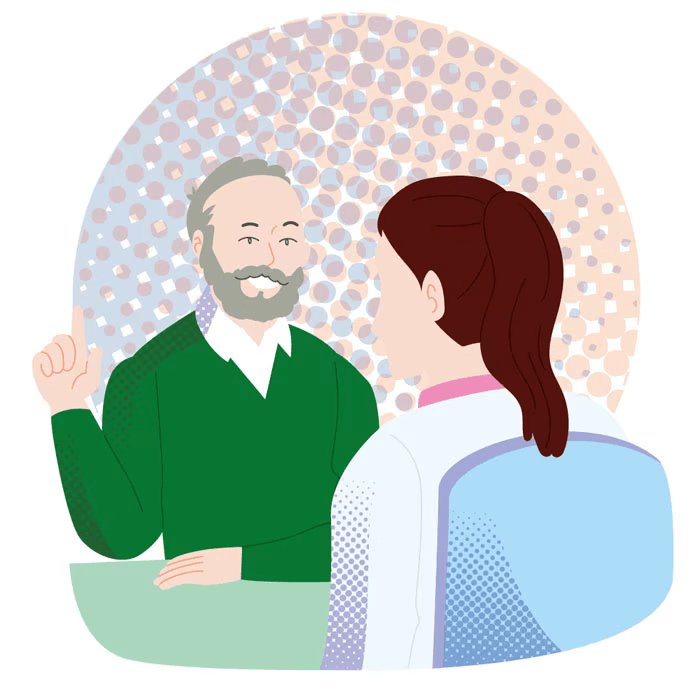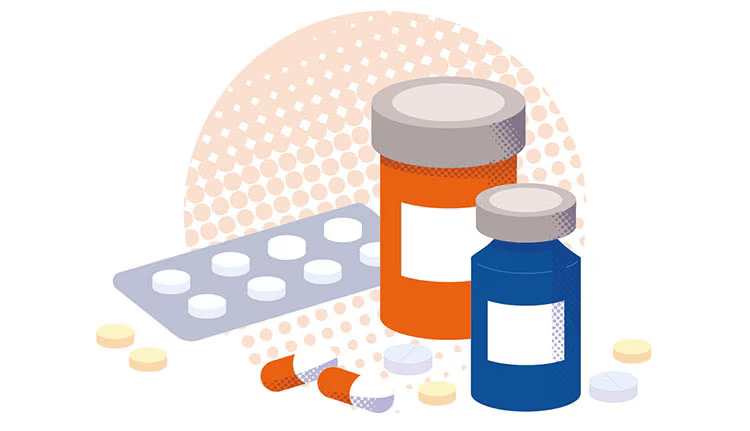Surgery is a locoregional treatment for cancers. The proposed procedure is a total prostatectomy, also known as radical prostatectomy. It is the surgical removal of the prostate gland and it typically involves a hospital stay of several days.
IIt aims to remove the entire prostate and the seminal vesicles*. In some cases, the neighbouring lymph nodes* are also removed; this is called lymph node dissection. This operation is performed by a urologist through open, laparoscopic, or robot-assisted surgery.
The two most common side effects of this surgery are loss of bladder control (incontinence) and the inability to maintain an erection (impotence)


